Description
ENG1516 Assignment 2 Memo | Due 28 May 2025. All questions fully answered.
This assignment is based on Units 3 and 4 in Tutorial Letter 501. Work through these two units
before you attempt the assignment. Answer the questions below in full sentences.
QUESTION 1
1.1. Briefly explain three functions of illustrations in picture storybooks. (3)
1.2. Give two reasons why an educator should teach learners to interpret visuals. (2)
1.3. Consider the children’s book AAAAAHHH! Mmawe! by Sarah McGregor and
Dumisani Jere (the book is available as a pdf file on myUnisa). Briefly discuss what
the illustrations in this book tell you about the main character, Tshedza? (2)
1.4. Look at the image below, taken from AAAAAHHH! Mmawe! In a paragraph of about
five sentences, discuss the function of the illustration. (5)
QUESTION 2
2.1. What was your favourite picture book as a child? Write a paragraph of more or less
five sentences in which you reflect on why this book was your favourite. (5)
2.2. Read point 3.8.3.7, “Perspective” on p. 83 in your prescribed textbook, Introducing
Children’s Literature as well as point 3.2.7, “Perspective” on p. 66 of Tutorial Letter
501.
2.2.1. Use a dictionary (hard copy or online) to look up the meaning of the word “panoramic.”
Write down the meaning of the word in your own words. (2)
2.2.2. In a paragraph of about five sentences, reflect on how perspective can be used in
illustrations in children’s literature. (5)
[12]
QUESTION 3
Carefully study the four pages below, taken from A Very Busy Day by El Marto, Chisanga
Mukuka and Christian Mokuba. Write a paragraph in which you analyse the illustrations and
explain how the text and images complement each other. (10)
QUESTION 4
Read the folktale below, The Lion, the Hyena, and the Rabbit and answer the following
questions.
The Lion, the Hyena, and the Rabbit
Once upon a time Simba, the lion, Feesee, the hyena, and Keeteetee, the rabbit, made up their
minds to go in for a little farming. So they went into the country, made a garden, planted all
kinds of seeds, and then came home and rested quite a while.
a
‘II. ooy h, ildi ogs
There are so m sand short
l t- —~~ –
in town! Toll one ct brick ones,
I s ones an
ones, 9 as I· ere I look.
everyw l
d lk • and out of shops. Mama an I wa md shops fo r books,
Sshhooppss ffoorr cblaogths eas n ~n all sorts of things.
Then, when the time came when their crops should be about ripe and ready for harvesting,
they began to say to each other, “Let’s go over to the farm, and see how our crops are coming
along.”
So one morning, early, they started, and, as the garden was a long way off, Keeteetee, the
rabbit, made this proposition: “While we are going to the farm, let us not stop on the road; and
if any one does stop, let him be eaten.” His companions, not being so cunning as he, and
knowing they could outwalk him, readily consented to this arrangement.
Well, off they went; but they had not gone very far when the rabbit stopped.
“Hullo!” said Feesee, the hyena; “Keeteetee has stopped. He must be eaten.”
“That’s the bargain,” agreed Simba, the lion.
“Well,” said the rabbit, “I happened to be thinking.”
“What about?” cried his partners, with great curiosity.
“I’m thinking,” said he, with a grave, philosophical air, “about those two stones, one big
and one little; the little one does not go up, nor does the big one go down.”
The lion and the hyena, having stopped to look at the stones, could only say, “Why, really,
it’s singular, but it’s just as you say;” and they all resumed their journey, the rabbit being by
this time well rested.
When they had gone some distance the rabbit stopped again.
“Aha!” said Feesee; “Keeteetee has stopped again. Now he must be eaten.”
“I rather think so,” assented Simba.
“Well,” said the rabbit, “I was thinking again.”
Their curiosity once more aroused, his comrades begged him to tell them his think.
“Why,” said he, “I was thinking this: When people like us put on new coats, where do the
old ones go to?”
Both Simba and Feesee, having stopped a moment to consider the matter, exclaimed
together, “Well, I wonder!” and the three went on, the rabbit having again had a good rest.
After a little while the hyena, thinking it about time to show off a little of his philosophy,
suddenly stopped.
“Here,” growled Simba, “this won’t do; I guess we’ll have to eat you, Feesee.”
“Oh, no,” said the hyena; “I’m thinking.”
“What are you thinking about?” they inquired.
“I’m thinking about nothing at all,” said he, imagining himself very smart and witty.
“Ah, pshaw!” cried Keeteetee; “we won’t be fooled that way.”
So he and Simba ate the hyena.
When they had finished eating their friend, the lion and the rabbit proceeded on their way,
and presently came to a place where there was a cave, and here the rabbit stopped.
“H’m!” ejaculated Simba; “I’m not so hungry as I was this morning, but I guess I’ll have
to find room for you, little Keeteetee.”
“Oh, I believe not,” replied Keeteetee; “I’m thinking again.”
“Well,” said the lion, “what is it this time?”
Said the rabbit: “I’m thinking about that cave. In olden times our ancestors used to go in
here, and out there, and I think I’ll try and follow in their footsteps.”
So he went in at one end and out at the other end several times.
Then he said to the lion, “Simba, old fellow, let’s see you try to do that;” and the lion went
into the cave, but he stuck fast, and could neither go forward nor back out.
In a moment Keeteetee was on Simba’s back, and began eating him.
After a little time the lion cried, “Oh, brother, be impartial; come and eat some of the front
part of me.”
But the rabbit replied, “Indeed, I can’t come around in front; I’m ashamed to look you in
the face.”
So, having eaten all he was able to, he left the lion there, and went and became sole owner
of the farm and its crops.
Source: Zanzibar Tales, trans. George W. Bateman. Chicago: A.C. McClurg & Co. pp. 45-53.
4.1. Briefly explain what a folktale is. (2)
4.2. To which type of folktale does this story belong? Briefly motivate your answer. (2)
4.3. What other characteristics of a folktale can be found in this story? (2)
4.4. How would you describe the rabbit, Keeteetee’s character? (2)
4.5. Briefly describe the setting of this story. (2)
4.6. Write a paragraph of about six sentences in which you discuss how you would explain
the values, morals or lessons of this story to learners in a Foundation Phase
classroom. (6)
[16]
TOTAL MARKS: 50



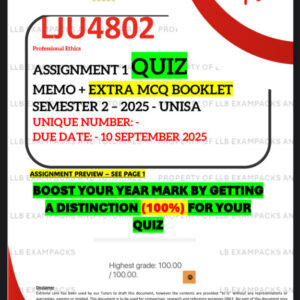
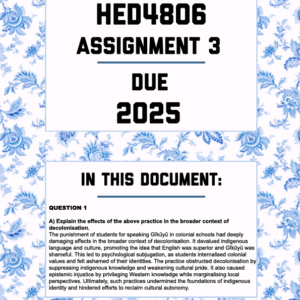




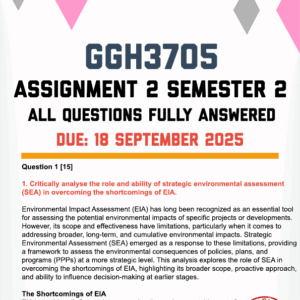
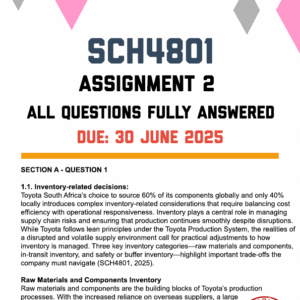
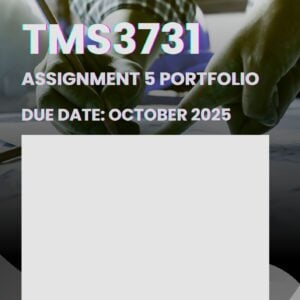










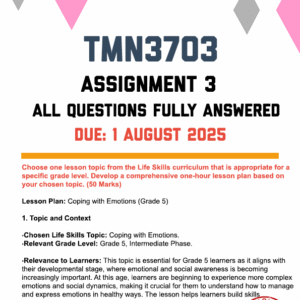
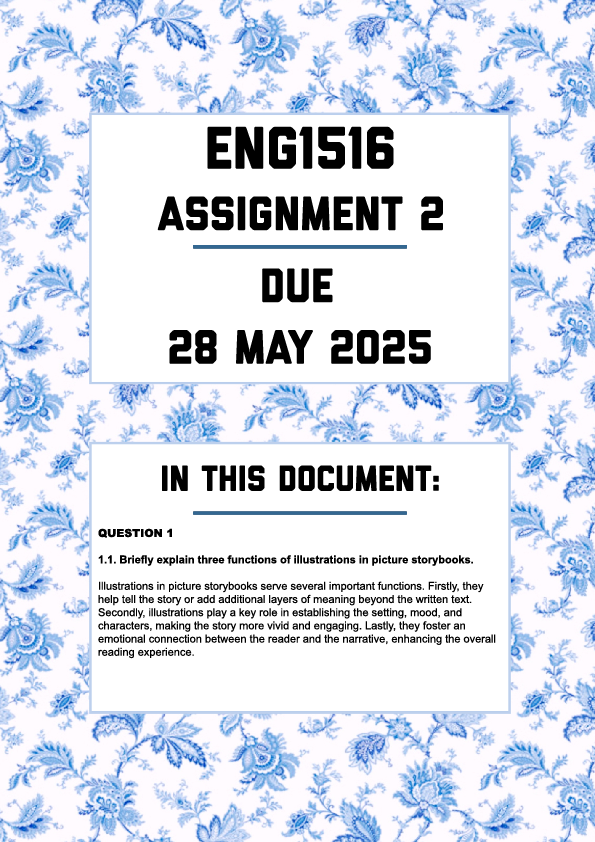




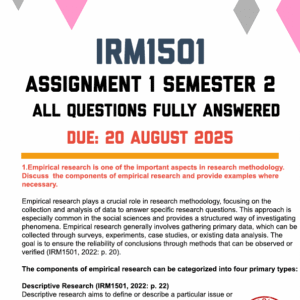





Reviews
There are no reviews yet.